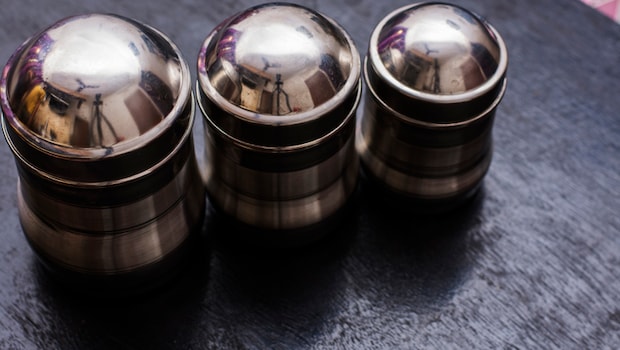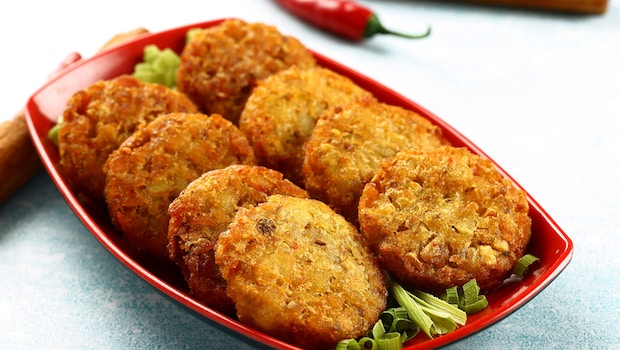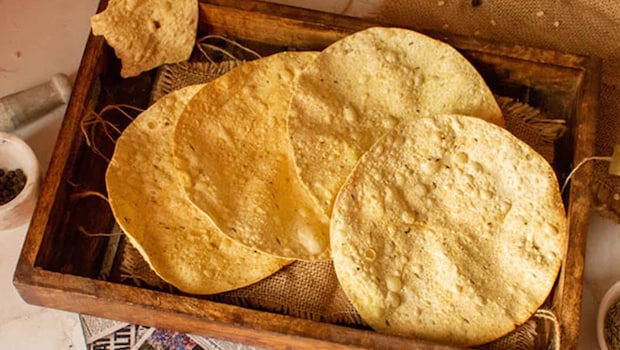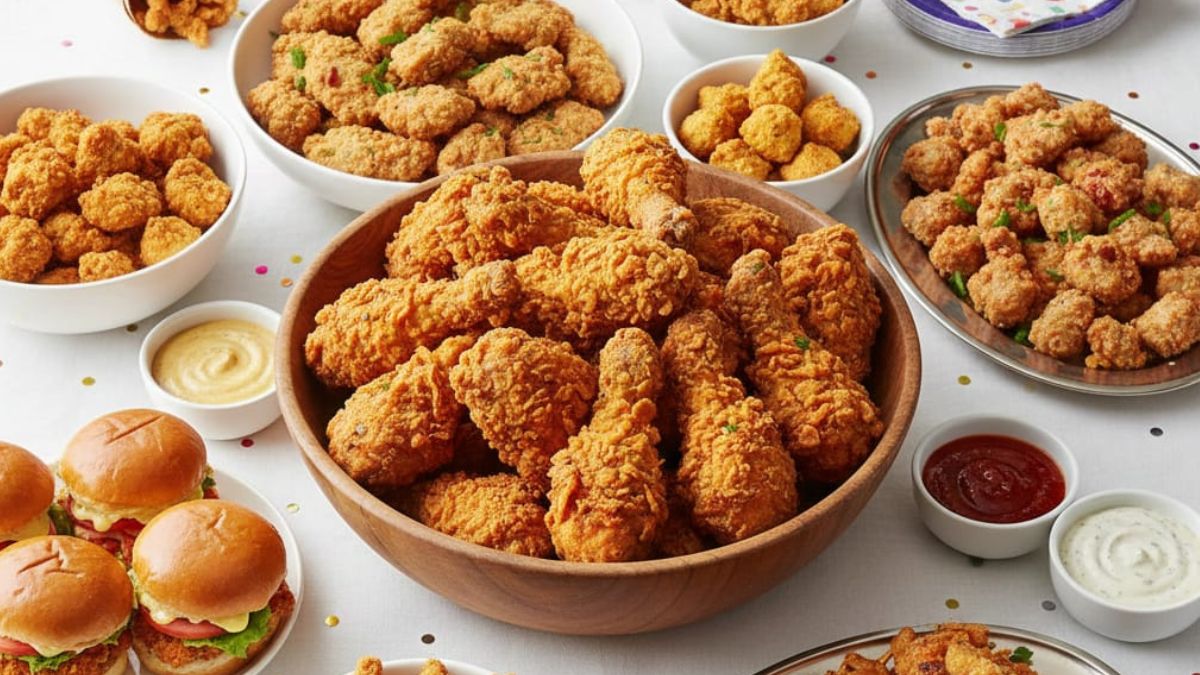The monsoon brings chai cravings, cosy weather, and the irresistible urge to fry up some samosas or grab a handful of bhujia with your evening tea. But it is also the season where crunchy snacks become soft, papads lose their crispiness, and namak paras turn chewy overnight. Thanks to the excessive humidity in the air, even your favourite airtight jar can feel like it is betraying you. But there is good news. A few simple hacks can go a long way in helping you protect the crispiness of your snacks. From samosas to mathri, here is how to keep them crunchy and monsoon-proof.
Also Read: Boost Your Immunity With Tulsi! 5 Unique Ways To Add It To Your Monsoon Diet
Why Do Snacks Lose Their Crunch During Monsoon?

The main culprit behind soggy snacks in the monsoon is humidity. Moisture from the air finds its way into everything—especially fried or porous snacks. On top of that, poor packaging habits are another reason. Many jars in Indian homes have half-sealed lids or worn-out seals that do not lock in freshness. Together, these factors can ruin the taste and texture of your favourite snacks.
How To Store Crispy Snacks During Monsoon Season
If you are wondering how to protect your samosas, bhujia, or chaklis from becoming limp during rains, these practical storage tips are worth trying. Simple changes in packaging and placement can make all the difference.
1. Use Airtight Containers The Correct Way
Always shift snacks into airtight containers immediately after opening the pack. Leaving them out even briefly allows moisture to creep in. Seal them tightly every time.
Say goodbye to old dabbas. If the lid no longer clicks shut or the rubber seal is worn out, it is no longer effective against humidity. Upgrade your jars every season.
For added protection, place your snacks in a zip-lock pouch or foil before placing them inside the container. This gives a double layer of defence.
2. Add A Tissue Or Silica Pouch To Absorb Moisture
Use a kitchen tissue: Place a clean kitchen tissue inside your jar. It will absorb excess moisture and help keep the snacks crisp.
Try silica gel: Reuse silica pouches from gadget boxes or shoe packs. Wrap them in paper and make sure they do not touch the food directly.
Rotate regularly: In areas with high humidity, replace tissues every 2 to 3 days to maintain freshness.
3. Never Store Hot Or Warm Snacks

Avoid packing freshly fried samosas or chaklis straight into containers. Let them cool fully first.
Hot snacks release steam inside the jar, which turns into condensation and ruins the texture.
Even when storing reheated pakoras, ensure they are at room temperature to prevent sogginess.
4. Choose Glass Or Steel Jars Over Plastic
Plastic containers tend to trap more humidity than you think. Glass and steel jars offer better seals and insulation.
Unlike plastic, glass or steel does not retain food smells and keeps snacks fresher for longer.
Those old-school steel dabbas in your mum's kitchen? They are perfect for monsoon storage.
5. Refry Or Reheat When Snacks Lose Crunch
When your snacks start losing crispiness, refry lightly, toss them in a dry kadhai, or microwave for 30–60 seconds—no oil required.
Do not over-toast. Just heat enough to evaporate the trapped moisture and bring the texture back.
This tip is ideal for mathri, chaklis, banana chips, and more—but skip it for very delicate items.
6. Store Snacks In A Dry, Cool Place

Avoid placing jars near stoves or sinks, which attract humidity. Use a dry cupboard instead.
Stay away from windows, balconies, or the top of the fridge—these areas collect condensation easily.
If you live in humid regions like Kerala or Maharashtra, a dehumidifier can be a helpful addition for extra protection.
How To Revive Snacks That Have Already Gone Soggy
Even with the best storage, sometimes your snacks may turn soft. Do not toss them yet.
Place snacks in a preheated oven or air fryer for 3–5 minutes.
For dry namkeen items, heat in a kadhai or on a tawa over low flame to remove moisture.
Add a few drops of oil while reheating to help restore texture.
Avoid microwaving directly unless using a paper towel base—steam buildup can worsen sogginess.
Best Types Of Containers For Snack Storage In Humid Weather

Not all airtight containers are made equal. Choosing the right material can make a big difference.
Use borosilicate glass jars with silicone seal lids for long-lasting protection.
Stainless steel dabbas are naturally moisture-resistant and great for Indian kitchens.
Avoid plastic jars with snap lids that do not seal fully.
Test airtightness by sealing an empty jar and submerging it in water—if you see bubbles, it is leaking.
Also Read: Monsoon Making You Feel Sleepier? Here's A Quick Way To Boost Your Energy
Common Mistakes That Make Snacks Soggy During Monsoon
Even one small slip can undo all your storage hacks. Avoid these everyday mistakes:
Storing snacks while still warm
Leaving jars open during serving time
Using worn-out containers with cracked seals
Keeping jars near windows, stoves, or fridge tops
Forgetting to replace kitchen tissues or silica packs regularly
How To Keep Indian Snacks Crispy During Monsoon Season
From crunchy murukku to flaky samosas, every Indian snack behaves differently when humidity creeps in. The key is knowing how to store and revive them based on their texture and ingredients. Here is a guide that breaks it down by category—so your favourites stay crunchy through every rainy spell.
1. Fried Snacks That Lose Crunch Easily
How To Keep Samosas Crispy
Store them in a paper-lined container to absorb excess oil and moisture. Reheat in an oven or air fryer for 5–6 minutes instead of microwaving. This helps restore the flaky outer layer.
How To Store Aloo Tikki

After frying, place them on a wire rack instead of paper towels to prevent sogginess. Before serving, warm on a tawa with a small drizzle of oil to revive the crust.
Tips For Crisp Pakoras
Add a spoonful of rice flour or cornflour to the batter. This creates a firmer outer layer. Always fry in small batches over medium heat for best results.
How To Store Kachoris Without Sogginess
Cool them completely before transferring to a paper bag. Reheat in an oven or toaster—not in a microwave—to maintain their crisp shell.
Best Way To Store Vadas
Use coarsely ground lentils for better texture. If storing leftovers, slice and lightly refry or toast in an oven before serving.
2. Dry Snacks With Longer Shelf Life
How To Store Murukku
Always store in an airtight steel or glass jar—not plastic. Add a dry tissue or a few uncooked rice grains inside the container to absorb moisture.
Tips For Keeping Sev Fresh
Cool completely before storing. Add a pinch of hing to the dough—it reduces moisture absorption and extends shelf life.
Storing Mathri In Humid Weather

Fry on low heat for even crispness. Once cooled, store with bay leaves or cloves, which act as natural moisture repellents.
How To Keep Masala Peanuts Crunchy
After frying, roast briefly in an oven to eliminate extra oil. Store them in layers separated by paper to avoid clumping and sogginess.
Best Way To Store Bhujia
Dust with cornflour before frying to improve crispness. Store in glass jars and avoid opening the lid too often during the rainy season.
3. Snacks With Special Storage Needs
How To Store Banana Chips Properly
Add turmeric and salt before frying to help them stay crisp longer. Store only in airtight tins lined with parchment paper—avoid plastic bags.
How To Store Khakhras During Monsoon
Keep in a tightly sealed container with dry roasted rice or a silica packet. If they go soft, re-toast on a dry tawa for 30 seconds each side.
How To Keep Papads Crisp

Roast or fry only right before serving. Store pre-fried ones in airtight jars lined with paper towels, especially in coastal regions.
4. Moisture-Prone Chaats And Puffed Snacks
How To Store Bhel Puri Ingredients
Always keep puffed rice and chutneys separate. Store puffed rice in an airtight jar with a dry cloth or tissue inside to maintain its crunch.
Regional Monsoon Snacks That Stay Crispy Naturally
Some traditional snacks are made to withstand moisture—and they deserve a spot in your monsoon pantry.
Jackfruit chips from Kerala: Thickly sliced and double-fried, they last longer in coastal humidity.
Khakhras from Gujarat: Naturally dry and roasted, they are less prone to sogginess.
Besan sev from Madhya Pradesh: Fine strands hold up better when stored correctly.
Urad dal papads from Punjab: With low oil and high starch, they stay dry for weeks.
These region-specific snacks are not just delicious—they are built for Indian weather.
About Nikita NikhilMeet Nikita, a passionate soul with an insatiable love for two things in life: Bollywood and food! When she's not indulging in binge-watching sessions, Nikita can be found behind the lens capturing moments or expressing her creativity through painting.








